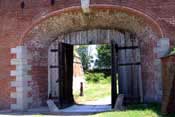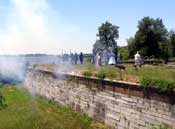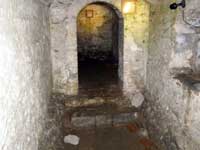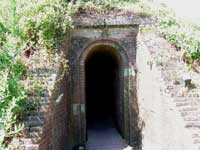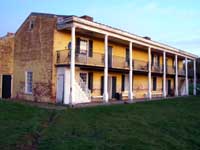Fort Mifflin - Pennsylvania Historic Site

Despite having achieved impressive victories at Trenton and Princeton, General George Washington knew what could lay ahead- a full scale assault on Philadelphia, then the capital of the Colonies. The Battles of Brandywine, Paoli and Germantown were embarrassing defeats for his Army and they desperately needed a break. They didn’t get one. Beginning in late September 1777, the British laid siege to Philadelphia. After Generals Cornwallis and General Howe’s troops marched into the city on September 26th, the British seemed confident that they’d at least temporarily vanquished their enemy. Yet Benjamin Franklin knew differently, saying instead of General Howe having taken Philadelphia, “it would be more proper to say that Philadelphia has taken Sir William Howe.”
General Washington wished to make Franklin’s witticism a reality by maintaining control of two strategic forts along the Delaware River near the capital- Fort Mercer in New Jersey and Fort Mifflin near Philadelphia. Washington argued that if the Continentals could block major roads into the city and command these two bastions, the situation would reverse itself and turn into a siege favoring his Army. Hessian troops led by Colonel Karl von Donop crossed the Delaware, wanting revenge for their humiliating defeat at Trenton the previous December. Saying “either the Fort will soon be called Fort Donop or I shall have fallen”, he led an attack against Fort Mercer. He got his wish. Americans vigorously defended the Fort, killing Donop and decimating the attacking force.
The British then turned their sights on Fort Mifflin, already having made a minor bombardment a few weeks earlier with little effect. On November 10, 1777 British gunboats hurled an estimated 10,000 cannonballs at the Fort over a six day period, causing commanding officer Samuel Smith to abandon the bastion under cover of darkness.
The bombardment of Fort Mifflin is considered a major loss for the Americans, but the defeat held a silver lining. As the British were preoccupied in their efforts to destroy Philadelphia and its strategic fortifications, General Washington escaped with much of his Army intact to Valley Forge, where they set up camp in December 1777, waiting for the snows of Winter.The fort was rebuilt in 1798 as one of our coastal defenses and remained active until the Korean War. The fort was most known for it's role as a Confederate Prison during the Civil War. Many of the ghost tales originate from those days. Most notably is the recent discovery of Casemate 11 (an underground holding cell). The cell was discovered during routine lawn care (the lawn mower fell into a hole) and had been buried for at least 150 years. The show Ghosthunters was even brought in to check for spirits.
Today Fort Mifflin is a quiet and mostly undiscovered treasure. When you first arrive you see a few run down historic buildings, but don't be discouraged. The real treasures are all the spooky underground casemates - many dark and quite creepy. Be sure to bring your flashlight. There are special events including reenactments from the different wars along with a 'Sleep with the Ghosts' event where you can actually spend the night at the fort and roam around all night at your leisure. More about Fort Mifflin
